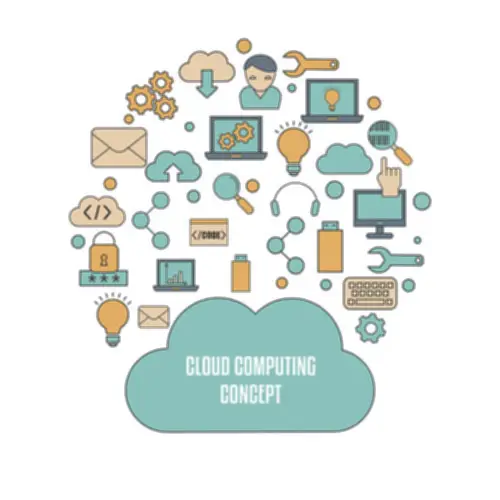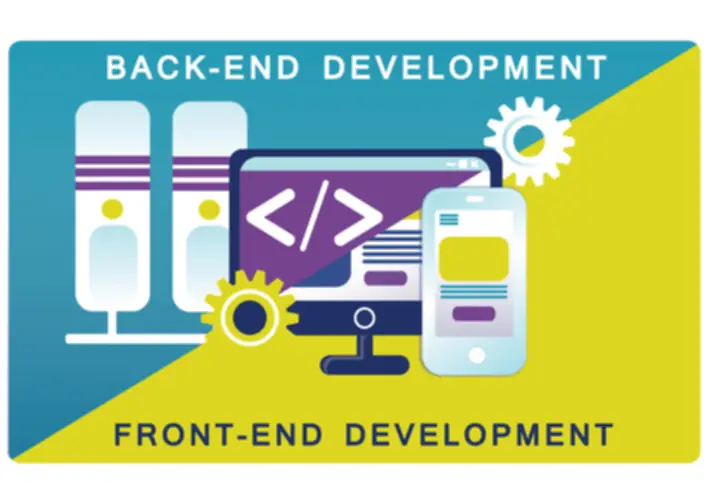For example, a cyber-attack can lead to information breaches, system failures, and downtime, impacting an organization’s ability to operate successfully and serve its prospects. By evaluating the impact of risks, organizations can prioritize their response efforts and allocate assets accordingly. This permits them to concentrate on managing risks which have the potential to considerably risk impact impact their operations and overall efficiency. Insurers should perceive the dangers climate change poses to their own and to their policyholders’ businesses, and the personal threat and solvency assessment (ORSA) plays a key role in achieving this.
Extra Articles About Quality Management
A firm could have already addressed the major dangers of the company through a SWOT analysis. Although a SWOT analysis might prove to be a launching point for further discussion, danger evaluation usually addresses a selected query while SWOT analysis are sometimes broader. Some dangers may be listed on both, however a danger evaluation ought to be more specific when attempting to address a specific problem. It’s onerous what are ai chips used for to acknowledge risk and not utilizing a proper project tracking system in place. Across all of ProjectManager’s views, you probably can monitor progress and talk along with your group as you work together. But, to take it even further, leverage our built-in dashboards and project reports to stay on prime of all elements of your tasks, so you’re able to establish dangers as soon as they seem.
Risk Management In Financial Companies Vs Different Industries
For instance, let’s contemplate a project that entails creating a model new software application. The likelihood of a knowledge breach occurring is assessed as reasonable, whereas the impression is evaluated as excessive because of the potential lack of delicate customer info. By multiplying the chance (moderate) by the impact (high), a danger influence worth is obtained, indicating the level of consideration and resources that must be devoted to addressing this threat. Second, risk management is the procedures in place to reduce the damage carried out by danger. Third, risk communication is the company-wide strategy to acknowledging and addressing threat.
Psychology Of Risk & It Is Influence On Procurement Selections
Despite its significance, there are some frequent misconceptions surrounding danger impression worth. Risk magnitude was additionally underestimated, which resulted in extreme leverage ratios within subprime portfolios. As a result, the underestimations of occurrence and risk magnitude left establishments unable to cowl billions of dollars in losses as subprime mortgage values collapsed.


This ensures that the enterprise is ready to sort out potential risks effectively and minimize their impression on key objectives. In today’s modern threat landscape, compliance risk, cybersecurity threat, fraud threat, and even climate change threat can have a major impact on your company’s reputation and bottom line. A danger impact matrix, also referred to as a risk evaluation matrix, is a robust software that mixes the probability and influence scores of each recognized danger and ranks them in terms of precedence for management. This visual illustration is crucial in danger evaluation and project management.
Risk evaluation additionally helps quantify risk, as management may not know the monetary impression of one thing taking place. In some instances, the information might help corporations keep away from unprofitable projects. In other cases, the data might assist put plans in motion that cut back the probability of one thing happen that may have caused monetary stress on a company. The outcomes could be summarized on a distribution graph showing some measures of central tendency such because the imply and median, and assessing the variability of the information by way of commonplace deviation and variance. The outcomes may also be assessed using threat management instruments similar to scenario analysis and sensitivity tables. Separating the completely different outcomes from finest to worst offers an affordable spread of insight for a danger manager.
These embody figuring out potential dangers, evaluating their impact, and calculating their value. The time period threat evaluation refers to the assessment process that identifies the potential for any opposed occasions that may negatively have an effect on organizations and the environment. Risk evaluation is often performed by firms (banks, development teams, well being care, and so on.), governments, and nonprofits. Conducting a threat analysis may help organizations decide whether or not they need to undertake a project or approve a monetary software, and what actions they may need to take to protect their interests. Risk analysts usually work in with forecasting professionals to minimize future unfavorable unexpected results. Risk impact refers again to the potential penalties or effects that will end result from the occurrence of a specific risk event.

The Delphi approach involves a panel of specialists on matters which are crucial to your project threat. It could be financial experts, lawyers, project management consultants or any other kind of skilled. This threat analysis technique consists of selling a debate among these consultants who finally want to succeed in a consensus on a selected topic, such as estimating the enterprise impression of a danger. As acknowledged, this might be carried out subjectively, which could result in error, especially if you do it by yourself because the project supervisor. To keep away from this, you’ll be able to contain all the staff members you contemplate related to get their enter on risk probability and potential unfavorable consequences. These disruptions can vary from minor inconveniences to complete shutdowns of crucial business functions.
Finally, integrate risk impact value into existing risk management practices and decision-making frameworks. This facilitates the incorporation of threat influence worth into routine operations and helps embed a risk-aware tradition within the group. Risk impact worth plays a major position in danger administration, significantly in risk evaluation and risk mitigation. It helps organizations prioritize dangers, make informed selections, and allocate resources successfully. Risk analysis consists of using tools and techniques to determine the chance and influence of project risks which were previously recognized. Therefore, threat evaluation helps project managers decipher the uncertainty of potential dangers and the way they’d impact the project when it comes to schedule, high quality and costs if, in reality, they have been to level out up.
Another misconception is that threat impact value supplies an absolute measure of threat. In actuality, risk influence value is a relative measure that helps prioritize risks inside a selected context. Different organizations may have different thresholds and aims, which affect the prioritization of dangers. It is vital to know the organization’s distinctive requirements when decoding risk impression values. Value at risk (VaR) is a statistic that measures and quantifies the level of financial danger within a agency, portfolio, or position over a specific timeframe. Investment and commercial banks usually use this metric to determine the extent and prevalence ratio of potential losses of their institutional portfolios.
Therefore, it’s essential to pinpoint unexpected events or situations that might significantly impede your organization’s enterprise strategy. It can even embody constructive outcomes that may arise from taking calculated risks. For occasion, launching a new product or getting into a brand new market can lead to elevated revenue and market share. When a outstanding Indonesian financial institution reported a deepfake fraud incident impacting its cellular utility, threat intelligence specialists at Group-IB got down to decide exactly what had occurred. Despite having dedicated cellular app security protections corresponding to anti-emulation, anti-virtual environments and anti-hooking mechanisms, the establishment nonetheless fell victim to a deepfake attack.
- Therefore, it’s crucial to pinpoint surprising occasions or situations that would considerably impede your organization’s enterprise strategy.
- On the opposite hand, quantitative threat evaluation is optional and goal and has extra element, contingency reserves and go/no-go selections, but it takes extra time and is more complicated.
- For instance, launching a brand new product or coming into a new market can result in increased revenue and market share.
- In the realm of project administration, danger chance refers to the likelihood of a particular threat occasion occurring through the course of a project.
- Organizations ought to determine and quantify these uncertainties to guarantee that the probability analysis is as accurate and reliable as potential.
In your analysis, use your risk standards to categorize every risk inside its acceptable severity degree and chance. Risks can appear associated to any aspect of a project, including the budget, assets, processes, or technology, to call just a few. For occasion, you could expertise operational risks like a breakdown in team communication, technical risks such as an information breach, or even exterior dangers like pure disasters.
Scenarios have four major options that may help organizations navigate uncertain instances. But to find a way to develop acceptable threat controls, a corporation ought to first perceive the potential threats. Minimize your business’ vulnerability to unexpected occasions and potential threats with a digital software like SafetyCulture. Describe the potential failure effect, the potential cause, and present controls. Use this digital template to identify business/department, efficiency, and studying needs.
By evaluating the potential consequences and chances of risks, decision makers can make knowledgeable selections and develop strategies that align with their danger urge for food. So, subsequent time you encounter a decision-making situation, remember the importance of conducting a radical risk evaluation to navigate the uncertain terrain with confidence. Since the trendy menace panorama is consistently changing, your danger evaluation matrix needs common attention and iteration to fulfill the challenges of right now and tomorrow. In order to calculate the danger impression value, organizations have to identify potential dangers that could affect their projects or operations. This requires a systematic evaluation of inside and exterior elements that may pose threats or opportunities. By proactively figuring out risks, organizations can develop strategies to mitigate their impression.
Sometimes, danger analysis is essential as a outcome of it guides firm decision-making. Consider the instance of a company considering whether or not to maneuver forward with a project. The choice could also be so simple as identifying, quantifying, and analyzing the danger of the project. The monetary disaster of 2008, for instance, exposed these issues as relatively benign VaR calculations that significantly understated the potential prevalence of threat events posed by portfolios of subprime mortgages.
Transform Your Business With AI Software Development Solutions https://www.globalcloudteam.com/ — be successful, be the first!